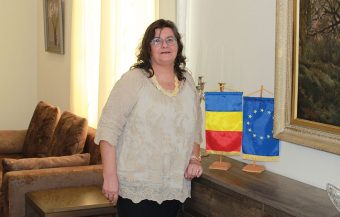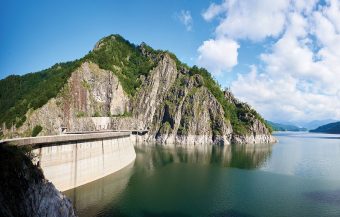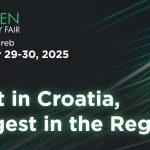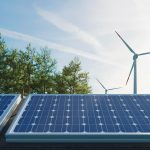
Biodiversity is particularly important for Romania because around 23 per cent of the country’s surface is occupied by protected natural areas, which are part of the Natura 2000 network of protected areas in the European Union. Romania has over 30,000 hectares under UNESCO protection, more than 70,000 hectares of rainforest and 20.81 per cent of sea waters. At the same time, the longest stretches of the Carpathians and the Danube are also located on the Romanian national territory.
H.E. Silvia Davidoiu, the Romanian ambassador to Serbia, says that at the national level, Romania envisages clear policies and strategies that recognize the connection between mitigating the consequences of climate change, stopping biodiversity loss, reducing environmental pollution and improving environmental management.
“Romania is fully committed to implementing the Paris Agreement and the 2030 Agenda objectives, in this respect adopting the Long-Term Strategy for Reducing the Greenhouse Gas Emissions- aiming to achieve climate neutrality by 2050. At the same time, we have increased our fight against plastic pollution, adopting the National Strategy and Action Plan for the transition to a circular economy to accelerate our transition to this model and increase waste management efficiency. In November last year, a nationwide Deposit-Return System was launched, the second largest system of this kind in Europe after Germany. We also have priorities in the forestry sector and, due to many problems encountered in the past, we are paying particular importance to the sustainable management of forests”, says Ambassador Davidoiu and adds: ”In this respect, an integrated Timber Tracking Information System (SUMAL) has been implemented; dedicated to the traceability of timber transport. This system is unique at the European level. Currently, a new version is under development, which will include the most recent technologies like satellite images, intelligent video cameras and LIDAR”.
Q: What funding programmes does the EU support for implementing the environmental protection policy, and what amounts are involved?
A: We have the National Recovery and Resilience Plan (NRRP), a national programme for accessing reimbursable and non-reimbursable external funds from the European Recovery and Resilience Mechanism. At the national level, the Ministry of Environment, Waters and Forests coordinates reforms and/or investments for components such as water management, forests and biodiversity protection, waste management and investment, digitalization of the environment and a part of the component digital transformation. In this respect, the line ministry has launched or will launch, in the near future, a series of calls for projects with an estimated total budget of 2,654,300,000 Euros (reimbursable and non-reimbursable funds).
There are other EU programmes managed at the level of the aforementioned institution: projects implemented through the Large Infrastructure Operational Programme (POIM 2014-2020), to be phased through the Sustainable Development Operational Programme (2021-2027), with financing from the European Fund for Sustainable Development; Horizon Europe Programme – Call for Actions for the implementation of the Mission Restore our ocean and waters by 2030 and Programme for Environment and Climate Action (LIFE).
At the same time, the MEWF implements the Environment Programme in Romania as a Programme Operator in partnership with the Norwegian Environment Agency. The Environment, Adaptation to Climate Change and Ecosystems Programme is also being implemented and financed by the Financial Mechanism of the European Economic Area (EEA) 2014-2021. I would also like to mention two other important projects: the Restore4Life project – Restoration of wetland complexes as life-supporting systems in the Danube Basin, financed by the Horizon Europe Programme, while our Ministry of Environment, Waters and Forests is a member of the consortium that implements the Net4LIFE project.
IN FOCUS:
- EDUCATION FOR SAFER MANAGEMENT OF ELECTRICAL AND ELECTRONIC WASTE
- INNOVATIVE TECHNOLOGY IS THE KEY TO CREATING A SUSTAINABLE FUTURE
- SERBIAN SCIENTISTS IN THE FIGHT FOR CLEANER AIR AND GREATER ENERGY EFFICIENCY
Q: What is the structure of energy sources in Romania? What is the share of RES, how much is invested in this area, and how will you increase the share of RES in the coming period?
A: Romania’s energy sources are diversified, including traditional sources such as coal (18 per cent of the production capacity), oil and natural gas (15 per cent), and nuclear (8 per cent), as well as renewable energy sources (RES) like hydroelectricity (35 per cent), wind energy (16 per cent), solar energy (7 per cent), and biomass (1 per cent).
In Romania, renewable energy sources represent a significant part of the energy, with hydroelectric, wind and solar energy being the most developed and further new capacities being planned. For instance, in 2023, Romania increased its national energy production with 624 MW (496 MW solar, 72 MW wind and 56 MWg others), in addition to 1.000 MW of electricity from prosumers forwarded to the national power grid. To increase the share of energy produced from renewable sources, Romania is implementing a series of measures such as expanding existing renewable energy capacities by constructing new wind farms, solar parks, and hydroelectric plants; stimulating private investments in renewable energy projects through financial support programmes, favourable tariffs, and tax incentives; improving infrastructure for connecting renewable energy sources to the grid to facilitate their efficient integration into the national energy system and promoting research and development of innovative technologies in the field of renewable energy to reduce costs and improve the efficiency of these sources.
Q: What environmental protection programmes are you implementing and what are the plans for the development of hydropower plants on the Danube?

A: As far as the environmental protection on the Danube goes, particularly in connection with the Iron Gates/ Djerdap hydropower plants, I would like to mention the WE PASS project. This project aims to find solutions to ensure fish migration upstream and downstream of the Iron Gates I and II dams. On the other hand, in Romania, certain projects are under development for sturgeon conservation and protection, reducing water pollution from urban agglomerations and reducing the diffuse pollution from agricultural sources.
The Đerdap HPP project is an extraordinary example of transborder cooperation between our two countries for the efficient and sustainable management of the hydropower and navigation capacities on the Danube, as well as the protection of the environment in a particularly attractive area of the river. Our cooperation on environmental protection of the area is developing under the Espoo Convention (1991) and the Bucharest Agreement (2028).
Q: What is the air quality like in Romania?
A: Romania has a National Air Quality Monitoring Network consisting of more than 180 monitoring stations throughout the country. It is administered by the Ministry of Environment, Waters, and Forests and is responsible for obtaining information on ambient air quality and informing the public about it.
Real-time monitoring data on the air quality in urban areas are published on the platform https:// www.calitateaer.ro/. Like many other European states, an important issue faced by our country in the field of air quality is the high level of particulate matter, especially in the atmosphere of some urban areas, the main cause being traffic, construction sites and residential heating. Exceeding the limit values for the particulate matter was recorded in large urban agglomerations such as Bucharest, Timișoara, Cluj Napoca, Constanța counties, etc.
Local authorities are drawing up air quality plans to redress this situation in zones and agglomerations where the exceedance of limit values pollutant concentrations in legislation in the air quality field. As a national measure to combat atmospheric pollution, the National Air Pollution Control Programme (NAPCP) was developed, and through it, measures were established to reduce anthropogenic emissions of atmospheric pollutants.
Interviewed by: Mirjana Vujadinović Tomevski
Read the story in the new issue of the Energy portal Magazine NATURE CONSERVATION.



